The Alluring Legacy: A Brief History of the Capet Dynasty
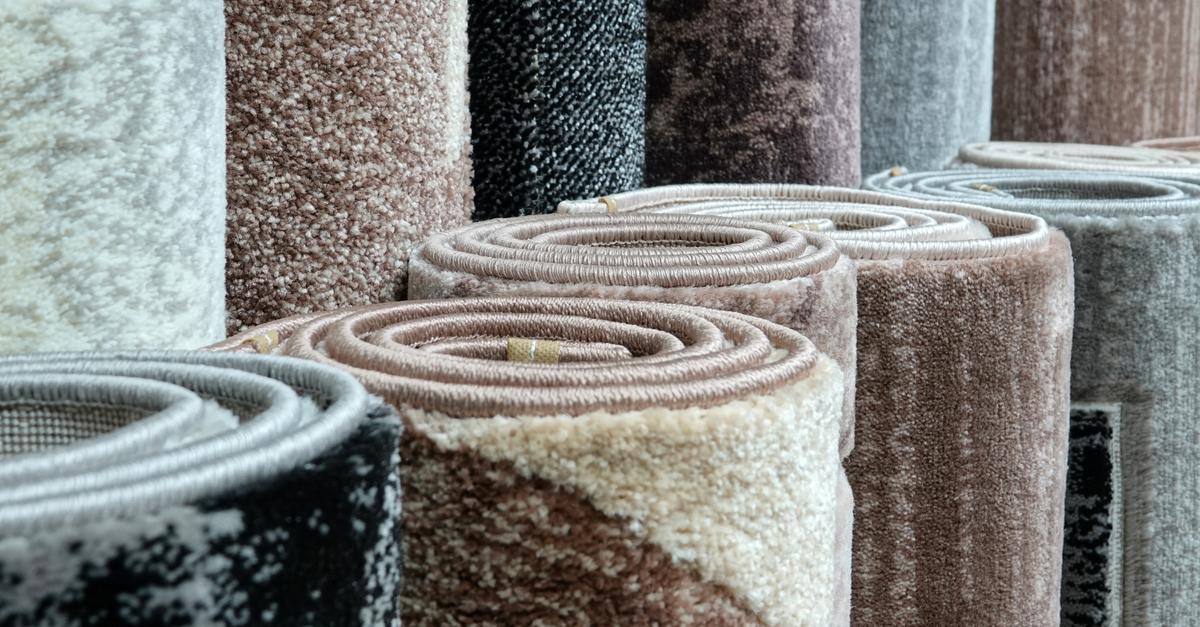
Enter the captivating world of the Capetians, a dynasty that has left an indelible mark on the fabric of our history.
In this exploration of their troubled lineage, we will wander through the ages, tracing the rise and fall of the Capetians as we uncover the secrets behind their enduring appeal.
As we embark on this brief but fascinating journey, we will decipher the triumphs, conflicts, and significant milestones that shaped the reign of the Capetians. From their contributions to art, culture, and governance to the tumultuous rivalries and alliances that shaped Europe, the Capetian story is one of power, intrigue, and an enduring legacy.
Join us on this fascinating journey into Capetian history, where the splendor of royal courts, the echoes of battles, and the changing times are woven into a sweeping narrative that continues to capture our imagination today.
Pazyryk carpet
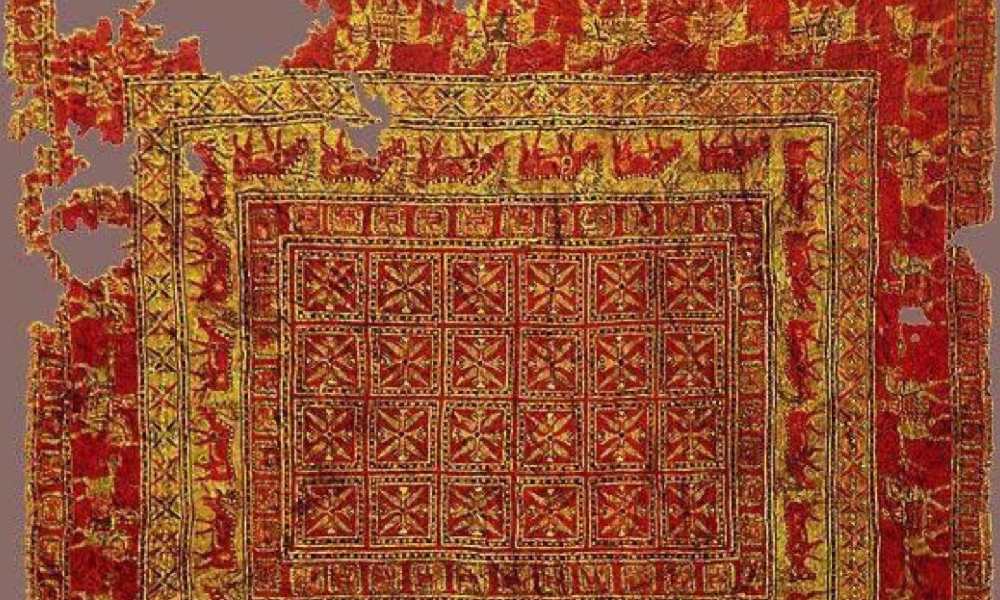
The oldest preserved carpet in the world is the so-called “Pazyryk carpet”, which was woven by nomads in the Altai Mountains in the 5th century BC. The carpet was found in a well-preserved condition in a Siberian ice grave in 1949 and is now in the State Hermitage Museum in St. Petersburg.
The Pazyryk carpet measures approximately 1.83 x 2.00 meters and consists of a warp of silk threads and a weft of wool. The rug is knotted in an asymmetrical knot and features a complex geometric pattern consisting of various animal motifs, including deer, lions, goats and horses.
What makes the Pazyryk rug so remarkable is not only its age and amazingly well-preserved condition, but also the fact that it is an important source for the history of rug making. The rug shows that complex rug-making techniques were used more than 2,500 years ago and are still used today.
In addition, the Pazyryk rug provides insight into the life and culture of the nomads who made it. It is believed that the rug was made as a burial offering for a prominent leader or warrior and served as a symbol of wealth and power.
Overall, the Pazyryk rug is an amazing example of Old World art and craftsmanship and an important historical object that has broadened our understanding of the history of rug making and nomadic cultures.
Nomadic carpets from Turkey
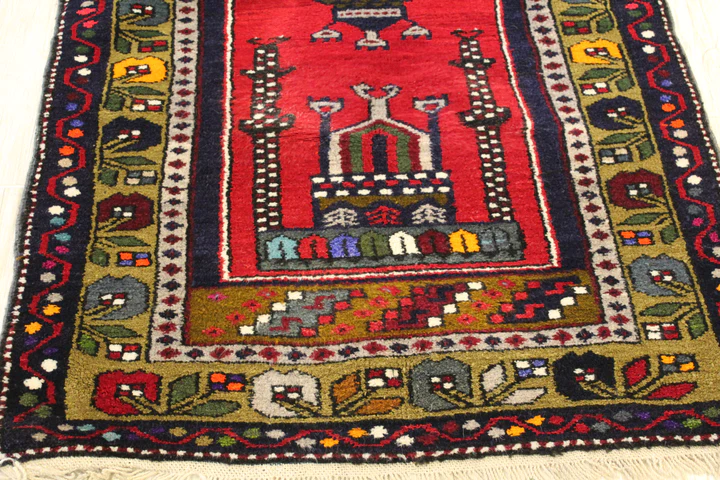
Nomadic rugs from Turkey have been an important part of Turkish culture and craftsmanship for centuries. These rugs are made by nomadic tribes who have lived in Turkey and surrounding regions for generations. They are known for their vibrant colors, geometric patterns, and durable construction designed for daily use in nomadic communities.
One of the most famous types of nomadic rugs from Turkey is the so-called “Kilim”. These flat, woven rugs are traditionally made without knots by weaving weft threads onto a warp thread. Kilims are often made of wool, cotton or silk and can be made in a variety of sizes and patterns. Some of the most famous designs are the “Gelibolu”, the “Konya” and the “Mardin”.
Another famous nomadic rug from Turkey is the “Yürük”. These carpets are made by nomadic tribes living in the region around Antalya and Alanya. They are often made of wool and feature unique designs inspired by the traditional patterns of the region. Yürük rugs are often made in warm hues such as red, orange and yellow and are known for their durability and longevity.
In addition to Kilim and Yürük, there are many other types of nomadic rugs from Turkey, including the “Tulu”, the “Kars”, the “Oltu” and the “Sumak”. Each of these rugs has its own unique characteristics and designs, which are due to the culture and traditions of the nomadic tribes that make them.
Overall, nomadic rugs from Turkey are an important part of Turkish culture and a valuable heritage that is passed down from generation to generation. They are a symbol of the craftsmanship and creativity of the nomadic tribes and a testament to the beauty and diversity of Turkish culture.
Armenian carpets
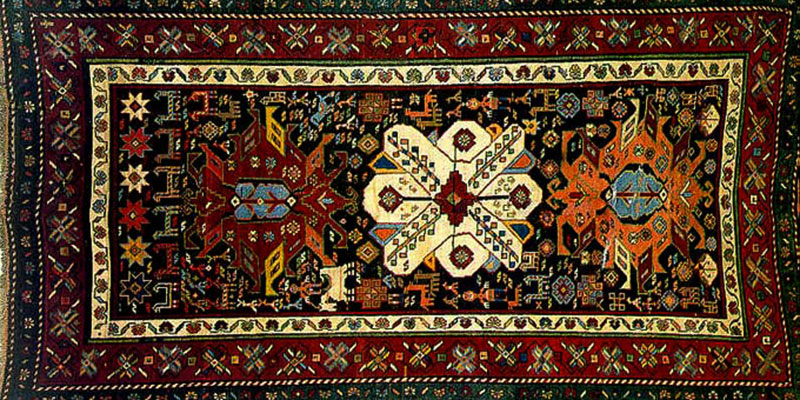
Armenian rugs have been an important part of Armenian culture and craft tradition for centuries. They are usually hand-woven and feature a variety of colors, patterns and designs, often inspired by Armenian history, culture and landscape.
Armenian rugs are made from a variety of materials, including wool, silk and cotton. They are often made in small, family-run workshops and can take several months or even years to complete, depending on the design and size.
A well-known feature of Armenian rugs is the use of symbols and patterns, which are often deeply rooted in Armenian history and culture. Some of the most famous patterns are the “Geghard,” the “Erebuni,” and the “Noah’s Ark.” These patterns often depict biblical and historical scenes that are significant to Armenian culture.
Armenian rugs are also prized for their high quality and durability. They are often tightly woven and can last for decades or even centuries. Some of the most famous Armenian carpets are the “Marash”, the “Karabakh” and the “Talish”.
Today Armenian carpets are produced both for trade and for private use. They are known in many countries of the world and are often appreciated by collectors and enthusiasts.
Overall, Armenian carpets are an important part of Armenian culture and a valuable heritage that is passed down from generation to generation. They are a symbol of the creativity and craftsmanship of the Armenian people and a testament to the beauty and diversity of Armenian culture.
Carpets from tajikistan
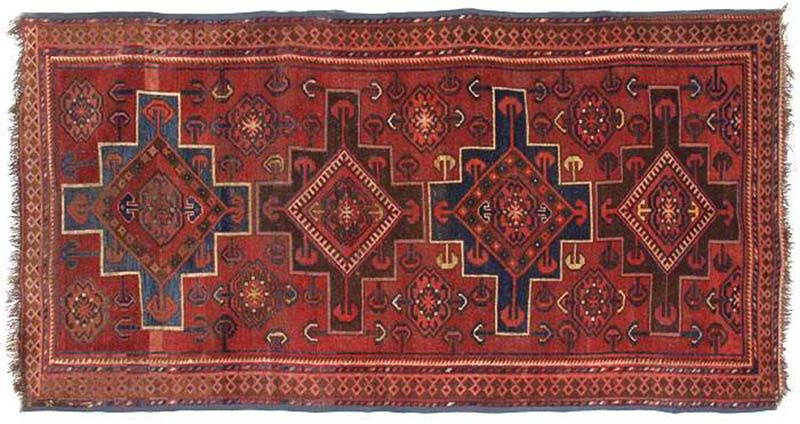
Carpets from Tajikistan are among the most beautiful and highest quality hand-knotted carpets in the world. They are known for their vibrant colors, complex patterns and high quality.
Tajik rugs are traditionally hand woven from wool, silk or cotton. The wool often comes from the sheep that live in the Pamir Mountains and is known for its fineness and quality. The rugs are made by skilled artisans who have mastered this craft for generations.
A well-known feature of Tajik rugs is the use of geometric and floral patterns, often inspired by the nature and architecture of the region. Some of the most famous patterns are the “Gul-i-Farang”, the “Gul-i-Surkh” and the “Gul-i-Murgh”. These patterns are often made in vibrant colors such as red, blue, green and yellow and can take several months or even years to complete, depending on the size and complexity of the pattern.
Tajik rugs are also prized for their high quality and durability. They are often tightly woven and can last for decades or even centuries. Some of the most famous Tajik rugs are the “Bokhara”, the “Kabud” and the “Istaravshan”.
Today, Tajik carpets are produced both for trade and for private use. They are known in many countries of the world and are often appreciated by collectors and enthusiasts.
Overall, Tajik rugs are an important part of Tajik culture and a valuable heritage that is passed down from generation to generation. They are a symbol of the craftsmanship and creativity of the Tajik people and a testament to the beauty and diversity of Tajik culture.
Turkmen carpets
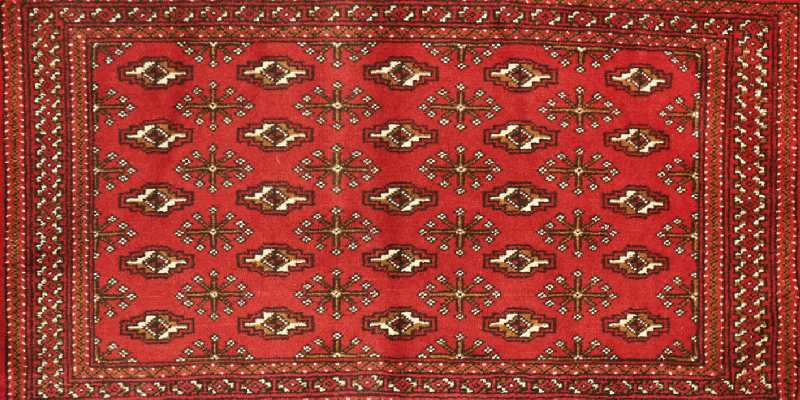
Turkmen carpets are among the most famous and valuable hand-knotted carpets in the world. They originate from the territory of present-day Turkmenistan and are made by skilled craftsmen in small workshops. Turkmen carpets are known for their vibrant colors, complex patterns and high quality.
Traditionally, Turkmen carpets are woven by hand from wool, silk or cotton. The wool often comes from sheep living in the Karakum desert and is known for its fineness and quality. The rugs are made by skilled artisans who have mastered this craft for generations.
A well-known feature of Turkmen rugs is the use of geometric and floral patterns, often inspired by the nature and history of the region. Some of the most famous patterns are the “Gul” and the “Bukhara”. These patterns are often made in vibrant colors such as reds, blues, greens and yellows and can take several months or even years to complete, depending on the size and complexity of the pattern.
Turkmen rugs are also prized for their high quality and durability. They are often tightly woven and can last for decades or even centuries. Some of the most famous Turkmen carpets are the “Tekke”, the “Yomud” and the “Ersari”.
Today, Turkmen carpets are produced both for trade and for private use. They are known in many countries of the world and are often appreciated by collectors and enthusiasts. Some of the most valuable Turkmen carpets have been sold for millions of dollars.
Overall, Turkmen rugs are an important part of Turkmen culture and a valuable heritage that is passed down from generation to generation. They are a symbol of the craftsmanship and creativity of the Turkmen people and a testament to the beauty and diversity of Turkmen culture.
Russian carpets
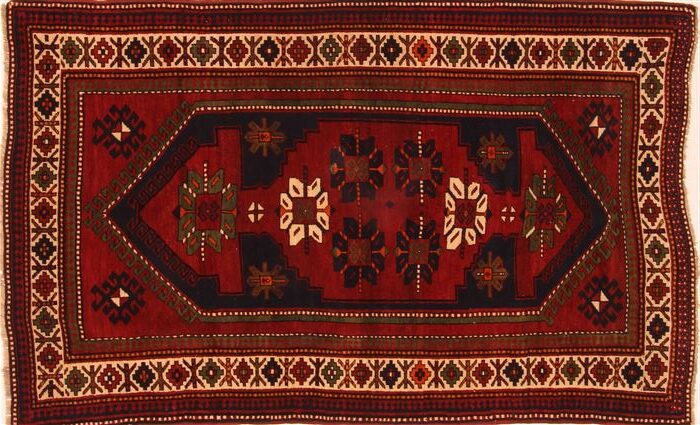
Although Russia is not known for its carpet production, there is still a long tradition of carpet making in some regions of the country. Russian rugs are often inspired by the country’s rich history and culture, as well as its natural landscapes and wildlife.
Most Russian rugs are handmade and are made of wool, cotton or silk. The wool often comes from sheep that live in the cool mountainous region of Central Asia. Some of the most famous regions for the production of Russian carpets are Dagestan, Caucasus, Turkmenistan and Uzbekistan.
Russian rugs are characterized by their diverse designs, which often include geometric patterns, flowers, and animals such as birds and bears. Some of the most famous Russian rug designs are the “Kazak”, the “Bakhshaish”, the “Kuba” and the “Talish”. These patterns are often in vibrant colors such as red, blue, green and yellow.
In addition to traditional Russian rugs, there are also more modern rugs designed by contemporary artists. These rugs are often more abstract and use unusual materials such as recycled plastic or leather. They are often used to decorate residential and commercial spaces and are popular in many countries around the world.
Some of the most famous Russian carpet manufacturers are Tufenkian, Bakshaish, Nazmiyal Collection and David Zahirpour. These companies produce both traditional and modern Russian rugs and are known for their high quality and craftsmanship.
Overall, Russian rugs are an important part of the country’s rich history and culture and a symbol of the creativity and craftsmanship of the Russian people. Although they are not as well known as rugs from other regions of the world, Russian rugs are still a valuable and cherished tradition.
Carpets made in the Soviet Union
During the time of the Soviet Union, carpet manufacturing was an important industry that flourished in various parts of the country. Most of the carpets were made by hand, and there were a variety of designs and styles that reflected the rich cultural diversity of the Soviet Union.
Some of the most famous carpet manufacturers in the Soviet Union were the state-owned companies “Tajikartex”, “Azerkhalcha” and “Kustarnyj Dom”. These companies produced a wide range of carpets, from traditional oriental designs to modern abstract patterns.
Some of the most popular carpet patterns produced in the Soviet Union were the “Bukhara”, the “Kazak” and the “Dagestan”. These patterns were often bright colors like red, blue and green and had eye-catching geometric designs.
Another important aspect of Soviet carpet making was the use of natural materials such as wool, cotton and silk. These materials were grown by farmers in the region and spun by hand before being used in the production of rugs. The rugs were often sturdy and durable and were passed down from generation to generation.
Although most Soviet rugs were made for the domestic market, some were also exported, particularly to Europe and the United States. Today, many of these rugs are highly sought after by collectors for their craftsmanship and cultural significance.
With the collapse of the Soviet Union in 1991, rug making in the region has changed dramatically, and many of the traditional craft techniques are now in jeopardy. Nevertheless, Soviet rug making remains an important part of the region’s history and culture, and its unique designs and craftsmanship continue to be prized by collectors and enthusiasts around the world.
Caucasian carpets
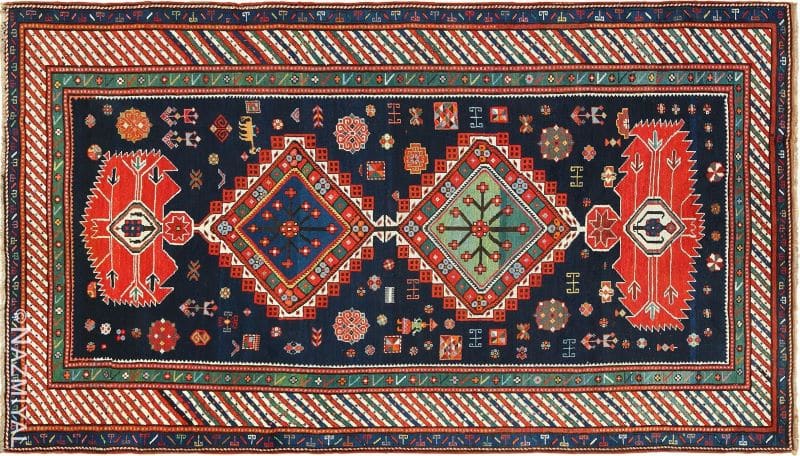
Caucasian carpets are among the most famous and sought-after carpets in the world. They originate from the Caucasus region, which stretches between the Black and Caspian Seas. The region’s rugs are known for their variety of designs, patterns and colors, which are due to the region’s rich cultural history.
There are several types of Caucasian rugs, including the Shirvan, the Kazak, the Gendje and the Karabagh. Each of these rugs has a unique design and pattern due to the different cultural influences that have met in the region throughout history.
Typical of Caucasian rugs are the geometric patterns and bright colors, often in red, blue and gold. Many rugs also have animal motifs such as birds, lions, or deer, which are often depicted in a stylized, abstract style.
Another characteristic of Caucasian rugs is the use of high quality materials such as wool and silk, which are spun and dyed by hand. These materials give the rugs special durability and make them a valuable heirloom that is often passed down through generations.
Caucasian rug making is an art that has been practiced in the region for centuries. The rugs are hand woven and often made by entire families. These traditions are still maintained today, although modern technologies have facilitated the production of carpets.
Because of their beauty, quality and cultural significance, Caucasian rugs are now highly sought after by collectors and enthusiasts around the world. They are not only a symbol of the rich cultural history of the region, but also a testament to the artistry and craftsmanship of their creators.
Derbent carpet
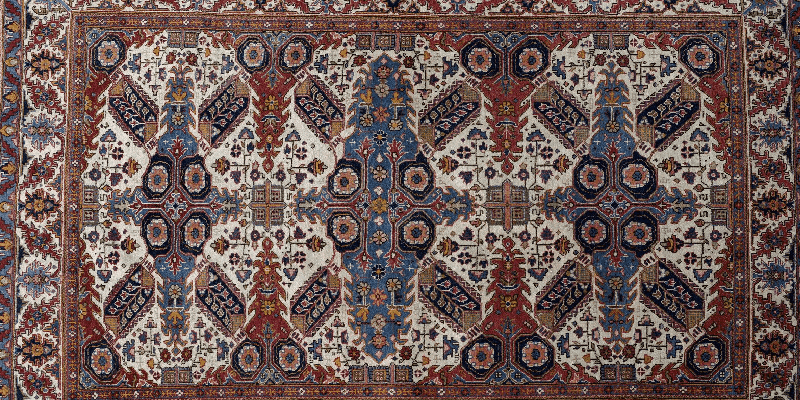
The Derbent carpet is an ancient Caucasian carpet that takes its name from the city of Derbent in the Dagestan region of northeastern modern Russia. It is considered one of the oldest preserved carpets in the world and is dated to the 17th century.
The carpet is about 4.3 meters long and 1.8 meters wide and is made of wool with a cotton warp. The design of the Derbent carpet is very unusual and different from other Caucasian carpets. It has a medallion-like design with three main motifs: a central medallion in the middle, surrounded by eight octagonal medallions and twelve rectangular fields.
The colors of the rug are also unusual in that it does not contain reds, which are common in many Caucasian rugs. Instead, natural hues of brown, yellow, green and blue are used to create a subtle yet appealing pattern.
The Derbent rug was acquired in 1890 by the famous rug collector and dealer Alexander Kazem-Bek and later sold to the Museum für Kunstgewerbe in Berlin. Today, the carpet is part of the museum’s collection and is considered one of the most important pieces of its kind.
The Derbent carpet has a special significance in the world of carpets, as it is not only a valuable work of art, but also an important historical reference to the culture and art of the Caucasus region. Its unique design and color choices continue to inspire carpet weavers and designers around the world.
Conclusion:
The Capets have undoubtedly left a fascinating and lasting legacy in history. From their humble beginnings to their rise to rule France, they have shaped the destiny of the nation and influenced Europe with their influence.
As we depart from this journey through the Capets’ history, their legacy remains vibrant and inspiring. Their achievements in the arts, culture, and governance are still felt today, and their political and diplomatic decisions have shaped the development of Europe.
The Capetians are more than just a dynasty of times past – they are a symbol of strength, leadership, and a link to France’s rich history. Their stories of power and intrigue are not just historical facts, but also a window into human nature and the complexities of rule.
May we learn from the Capets’ story and be inspired by their perseverance and legacy. Their story reminds us that the past exists not only in books, but lives on in our hearts and minds. Let us be encouraged by the Capets’ fascinating story to leave our own mark on the world and create a lasting memory.
Ali June 10, 2023 Carpet Cleaning


